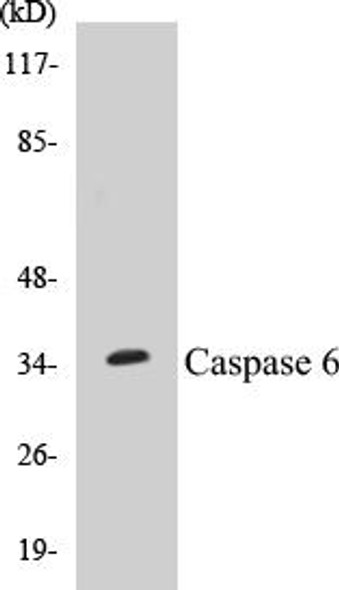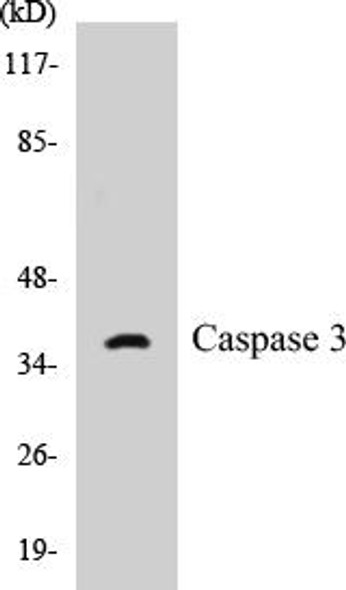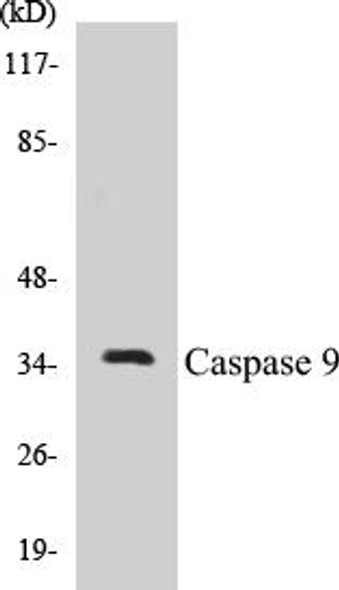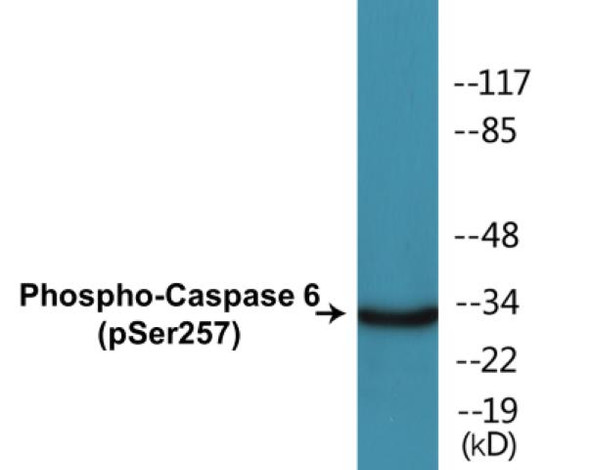Caspase 2 Colorimetric Cell-Based ELISA Kit
- SKU:
- CBCAB00564
- Product Type:
- ELISA Kit
- ELISA Type:
- Cell Based
- Research Area:
- Cell Death
- Reactivity:
- Human
- Detection Method:
- Colorimetric
Description
Caspase 2 Colorimetric Cell-Based ELISA Kit
The Caspase-2 Colorimetric Cell-Based ELISA Kit is a cutting-edge tool for the quantitative analysis of caspase-2 activity in cell lysates. This kit offers exceptional sensitivity and specificity, allowing for precise and reliable measurement of caspase-2 levels in a variety of cell types and experimental conditions.Caspase-2 is a critical mediator of apoptosis, playing a key role in the regulation of cell death and survival pathways. Dysregulation of caspase-2 has been implicated in various diseases, including cancer, neurodegenerative disorders, and autoimmune conditions.
By accurately measuring caspase-2 activity, researchers can gain valuable insights into the underlying mechanisms of these diseases and identify potential therapeutic targets.With its user-friendly protocol and high performance characteristics, the Caspase-2 Colorimetric Cell-Based ELISA Kit is an indispensable tool for studying the role of caspase-2 in cellular processes and disease pathogenesis. Whether you are conducting basic research or drug discovery studies, this kit provides the precision and reliability you need to advance your scientific investigations.
| Product Name: | Caspase 2 Colorimetric Cell-Based ELISA |
| Product Code: | CBCAB00564 |
| ELISA Type: | Cell-Based |
| Target: | Caspase 2 |
| Reactivity: | Human |
| Dynamic Range: | > 5000 Cells |
| Detection Method: | Colorimetric 450 nmStorage/Stability:4°C/6 Months |
| Format: | 96-Well Microplate |
The Caspase 2 Colorimetric Cell-Based ELISA Kit is a convenient, lysate-free, high throughput and sensitive assay kit that can detect Caspase 2 protein expression profile in cells. The kit can be used for measuring the relative amounts of Caspase 2 in cultured cells as well as screening for the effects that various treatments, inhibitors (ie siRNA or chemicals), or activators have on Caspase 2.
Qualitative determination of Caspase 2 concentration is achieved by an indirect ELISA format. In essence, Caspase 2 is captured by Caspase 2-specific primary antibodies while the HRP-conjugated secondary antibodies bind the Fc region of the primary antibody. Through this binding, the HRP enzyme conjugated to the secondary antibody can catalyze a colorimetric reaction upon substrate addition. Due to the qualitative nature of the Cell-Based ELISA, multiple normalization methods are needed:
| 1. | A monoclonal antibody specific for human GAPDH is included to serve as an internal positive control in normalizing the target absorbance values. |
| 2. | Following the colorimetric measurement of HRP activity via substrate addition, the Crystal Violet whole-cell staining method may be used to determine cell density. After staining, the results can be analysed by normalizing the absorbance values to cell amounts, by which the plating difference can be adjusted. |
| Database Information: | Gene ID: 835, UniProt ID: P42575, OMIM: 600639, Unigene: Hs.368982 |
| Gene Symbol: | CASP2 |
| Sub Type: | None |
| UniProt Protein Function: | CASP2: Involved in the activation cascade of caspases responsible for apoptosis execution. Might function by either activating some proteins required for cell death or inactivating proteins necessary for cell survival. Heterotetramer that consists of two anti-parallel arranged heterodimers, each one formed by a p18 subunit and a p12 subunit. Interacts with LRDD. Expressed at higher levels in the embryonic lung, liver and kidney than in the heart and brain. In adults, higher level expression is seen in the placenta, lung, kidney, and pancreas than in the heart, brain, liver and skeletal muscle. Belongs to the peptidase C14A family. 2 isoforms of the human protein are produced by alternative splicing. |
| UniProt Protein Details: | Protein type:EC 3.4.22.55; Apoptosis; Protease Chromosomal Location of Human Ortholog: 7q34-q35 Cellular Component: membrane; mitochondrion; cytoplasm; nucleus; cytosol Molecular Function:protein domain specific binding; protein binding; enzyme binding; cysteine-type endopeptidase activity Biological Process: luteolysis; nerve growth factor receptor signaling pathway; DNA damage response, signal transduction resulting in induction of apoptosis; positive regulation of apoptosis; apoptosis; positive regulation of neuron apoptosis; germ cell programmed cell death; protein processing; brain development; proteolysis; regulation of caspase activity; DNA damage response, signal transduction by p53 class mediator resulting in cell cycle arrest; aging |
| NCBI Summary: | This gene encodes a member of the cysteine-aspartic acid protease (caspase) family. Caspases mediate cellular apoptosis through the proteolytic cleavage of specific protein substrates. The encoded protein may function in stress-induced cell death pathways, cell cycle maintenance, and the suppression of tumorigenesis. Increased expression of this gene may play a role in neurodegenerative disorders including Alzheimer's disease, Huntington's disease and temporal lobe epilepsy. Alternatively spliced transcript variants encoding multiple isoforms have been observed for this gene. [provided by RefSeq, Jan 2011] |
| UniProt Code: | P42575 |
| NCBI GenInfo Identifier: | 83300977 |
| NCBI Gene ID: | 835 |
| NCBI Accession: | P42575.2 |
| UniProt Secondary Accession: | P42575,P42576, Q59F21, Q7KZL6, Q86UJ3, Q9BUP7, Q9BZK9 Q9BZL0, A8K5F9, D3DXD6, E9PDN0, |
| UniProt Related Accession: | P42575 |
| Molecular Weight: | 10,309 Da |
| NCBI Full Name: | Caspase-2 |
| NCBI Synonym Full Names: | caspase 2, apoptosis-related cysteine peptidase |
| NCBI Official Symbol: | CASP2 |
| NCBI Official Synonym Symbols: | ICH1; NEDD2; CASP-2; NEDD-2; PPP1R57 |
| NCBI Protein Information: | caspase-2; protease ICH-1; protein phosphatase 1, regulatory subunit 57; neural precursor cell expressed developmentally down-regulated protein 2 |
| UniProt Protein Name: | Caspase-2 |
| UniProt Synonym Protein Names: | Neural precursor cell expressed developmentally down-regulated protein 2; NEDD-2; Protease ICH-1Cleaved into the following 3 chains:Caspase-2 subunit p18; Caspase-2 subunit p13; Caspase-2 subunit p12 |
| Protein Family: | Caspase |
| UniProt Gene Name: | CASP2 |
| UniProt Entry Name: | CASP2_HUMAN |
| Component | Quantity |
| 96-Well Cell Culture Clear-Bottom Microplate | 2 plates |
| 10X TBS | 24 mL |
| Quenching Buffer | 24 mL |
| Blocking Buffer | 50 mL |
| 15X Wash Buffer | 50 mL |
| Primary Antibody Diluent | 12 mL |
| 100x Anti-Phospho Target Antibody | 60 µL |
| 100x Anti-Target Antibody | 60 µL |
| Anti-GAPDH Antibody | 60 µL |
| HRP-Conjugated Anti-Rabbit IgG Antibody | 12 mL |
| HRP-Conjugated Anti-Mouse IgG Antibody | 12 mL |
| SDS Solution | 12 mL |
| Stop Solution | 24 mL |
| Ready-to-Use Substrate | 12 mL |
| Crystal Violet Solution | 12 mL |
| Adhesive Plate Seals | 2 seals |
The following materials and/or equipment are NOT provided in this kit but are necessary to successfully conduct the experiment:
- Microplate reader able to measure absorbance at 450 nm and/or 595 nm for Crystal Violet Cell Staining (Optional)
- Micropipettes with capability of measuring volumes ranging from 1 µL to 1 ml
- 37% formaldehyde (Sigma Cat# F-8775) or formaldehyde from other sources
- Squirt bottle, manifold dispenser, multichannel pipette reservoir or automated microplate washer
- Graph paper or computer software capable of generating or displaying logarithmic functions
- Absorbent papers or vacuum aspirator
- Test tubes or microfuge tubes capable of storing ≥1 ml
- Poly-L-Lysine (Sigma Cat# P4832 for suspension cells)
- Orbital shaker (optional)
- Deionized or sterile water
*Note: Protocols are specific to each batch/lot. For the correct instructions please follow the protocol included in your kit.
| Step | Procedure |
| 1. | Seed 200 µL of 20,000 adherent cells in culture medium in each well of a 96-well plate. The plates included in the kit are sterile and treated for cell culture. For suspension cells and loosely attached cells, coat the plates with 100 µL of 10 µg/ml Poly-L-Lysine (not included) to each well of a 96-well plate for 30 minutes at 37°C prior to adding cells. |
| 2. | Incubate the cells for overnight at 37°C, 5% CO2. |
| 3. | Treat the cells as desired. |
| 4. | Remove the cell culture medium and rinse with 200 µL of 1x TBS, twice. |
| 5. | Fix the cells by incubating with 100 µL of Fixing Solution for 20 minutes at room temperature. The 4% formaldehyde is used for adherent cells and 8% formaldehyde is used for suspension cells and loosely attached cells. |
| 6. | Remove the Fixing Solution and wash the plate 3 times with 200 µL 1x Wash Buffer for five minutes each time with gentle shaking on the orbital shaker. The plate can be stored at 4°C for a week. |
| 7. | Add 100 µL of Quenching Buffer and incubate for 20 minutes at room temperature. |
| 8. | Wash the plate 3 times with 1x Wash Buffer for 5 minutes each time. |
| 9. | Add 200 µL of Blocking Buffer and incubate for 1 hour at room temperature. |
| 10. | Wash 3 times with 200 µL of 1x Wash Buffer for 5 minutes each time. |
| 11. | Add 50 µL of 1x primary antibodies (Anti-Caspase 2 Antibody and/or Anti-GAPDH Antibody) to the corresponding wells, cover with Parafilm and incubate for 16 hours (overnight) at 4°C. If the target expression is known to be high, incubate for 2 hours at room temperature. |
| 12. | Wash 3 times with 200 µL of 1x Wash Buffer for 5 minutes each time. |
| 13. | Add 50 µL of 1x secondary antibodies (HRP-Conjugated AntiRabbit IgG Antibody or HRP-Conjugated Anti-Mouse IgG Antibody) to corresponding wells and incubate for 1.5 hours at room temperature. |
| 14. | Wash 3 times with 200 µL of 1x Wash Buffer for 5 minutes each time. |
| 15. | Add 50 µL of Ready-to-Use Substrate to each well and incubate for 30 minutes at room temperature in the dark. |
| 16. | Add 50 µL of Stop Solution to each well and read OD at 450 nm immediately using the microplate reader. |
(Additional Crystal Violet staining may be performed if desired – details of this may be found in the kit technical manual.)










